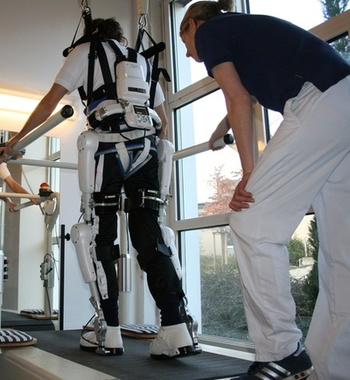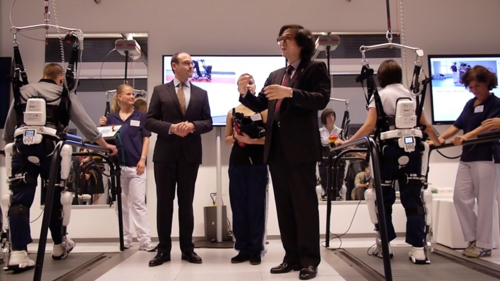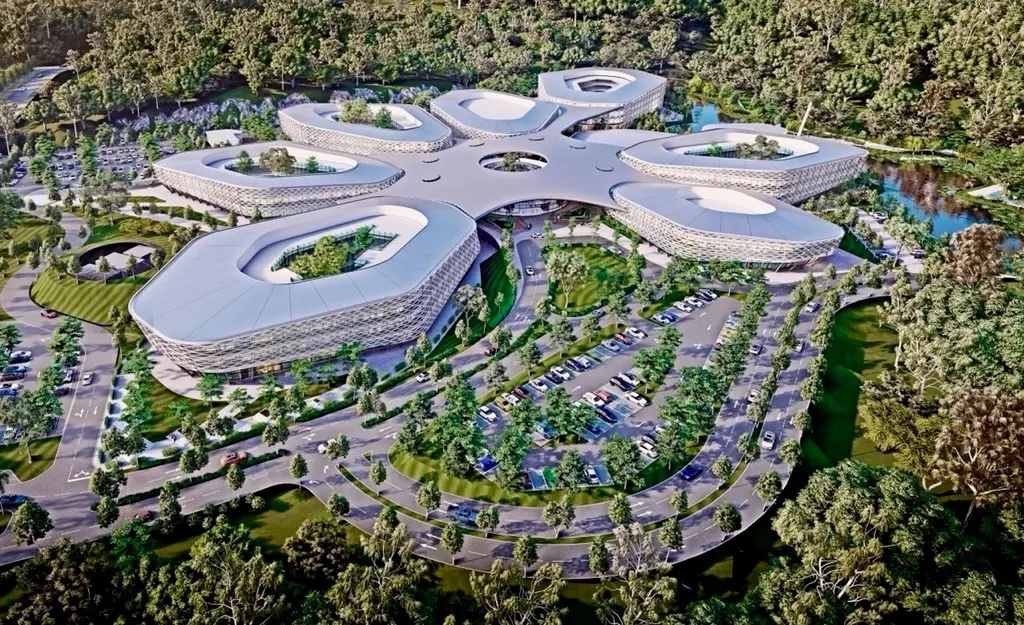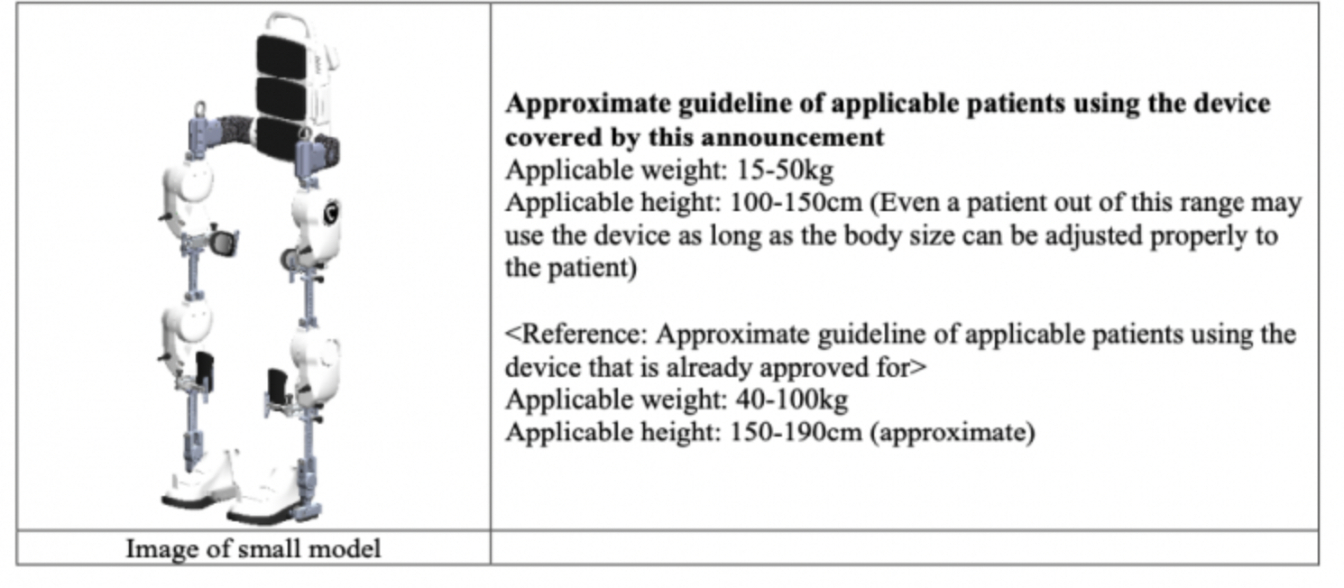J-STORIES - Imagine a cybernetic world like the Japanese cyberpunk franchise, “Ghost in the Shell”, where spinal cord injuries heal quickly, or where people can regain leg function after a car crash. It seems far-fetched, but one Japanese company is working to bring this fantasy world closer to reality.
Since it started out almost two decades ago, tech company Cyberdyne has been working on a new scientific field called “cybernics”. Coined by company CEO Yoshiyuki Sankai, cybernics is an amalgamation of various scientific disciplines such as neuroscience, artificial intelligence and robotics, and the corresponding industries, technologies and therapies.
The company pioneered the wearable exoskeleton robot known as ‘HAL’ (Hybrid Assistive Limb) that incorporates cybernics to assist the mobility of people whose muscle functionality has somehow become impaired. By detecting signals sent from the brain to the muscles, HAL moves according to the user's intention. The repetition of this process allows the brain to learn how to send signals that will result in precise and intended movements.

HAL is used in over 20 countries and has recorded a variety of successes. It is commonly used in assisting the treatment of various diseases and injuries that affect muscular function, such as neuromuscular conditions and spinal cord injuries. Last year, the academic journal Internal Medicine reported that patients with Amyotrophic Lateral Sclerosis (ALS), a neurological disorder that affects motor neurons and subsequently weakens muscles, managed to improve their gait significantly.
Also, HAL has been effective with injuries sustained from car accidents. Sankai presented a case this year where a middle-aged woman, who was unable to use her right leg for five years due to a car crash, was able to resume daily life and start jogging again after just three months of treatment.
HAL went viral in February of this year when legendary British rock singer Ozzy Osbourne posted on social media platforms about receiving treatment for his spine damage.
Cyberdyne's Sankai told J-stories it is vital to break down what he considers ‘artificial barriers’ between science and technology. However, the difficulty lies in the need to create an infrastructure that can bring the various technologies together. Since 2018, the company has been providing technical mentorship to startups and entrepreneurs who are working in a range of scientific fields to solve social problems through a project known as C-startup.
In addition, the Cybernics Excellence Japan (CEJ) fund, which includes Cyberdyne, as well as prominent financial institutions and life insurance companies in Japan, managed to raise ¥10 billion. Close to 30 startup companies, from bio and drug research, regenerative medicine, to apparel have been funded. The CEJ Fund has worked to initiate progress that can lead to the creation of a “Society 5.0/5.1,” which is touted as a “techno-peer support society where humans and technologies support one another.”
One of the companies funded by the CEJ includes Xenoma, a a company with clothing technology that can record body movement and electrocardiogram measurements.Through this, they are aiming for a “streamlined promotion of innovative technologies and devices from R&D (research and development) to social implementation” on a global scale.

Apart from funding, Cyberdyne has strengthened its partnership with Hirosaki Lifescience Innovation, a company working on regenerative medicine products based on blood vessel technology. The two companies have worked on the Cybernics Medical Innovation Base-A research facility, which was built close to Haneda Airport in February last year.
Another similar facility, the National Center for Neuro-robotics and Cybernetics, is being built in Malaysia and is expected to be the biggest medical complex in Southeast Asia upon its completion in 2024.

Cyberdyne has announced the creation of a smaller version of the HAL device in June, which can be used by people under 150 cm in height and between 15 kg and 50 kg in weight. Though it still needs governmental clearance in Japan, Sankai hopes that one day it can be used globally, as he believes technology must help create a society that includes and looks after everyone.
“There must not be a situation where people left behind in the advancement of science and technology, such as the elderly and vulnerable people with incurable diseases, are locked up in a room somewhere," he said. "The challenge for us now is to analyze how it can be used effectively, taking into account the degree of disease and individual differences,”.

Writing by Alisa Okawara
Editing by Desiderio Luna
Top page photo by Cyberdyne
For inquiries about this article, please contact jstories@pacficbridge.jp
***
Click here for the Japanese version of the article.
![[Podcast] Japanese technology to supercharge human fertility (Part 2)](https://storage.googleapis.com/jstories-cms.appspot.com/images/1765863548035unnamed-7_smallthumbnail.jpg)
![[Podcast] Japanese technology to supercharge human fertility (Part 1)](https://storage.googleapis.com/jstories-cms.appspot.com/images/1765440905082unnamed_smallthumbnail.jpg)


![[Interview: Part 2] A digital approach to tackle child hunger in Japan with dignity](https://storage.googleapis.com/jstories-cms.appspot.com/images/1766130666509unnamed_bigthumbnail.jpg)
![[Podcast] Japanese technology to supercharge human fertility (Part 2)](https://storage.googleapis.com/jstories-cms.appspot.com/images/1765863548035unnamed-7_bigthumbnail.jpg)
![[Podcast] Japanese technology to supercharge human fertility (Part 1)](https://storage.googleapis.com/jstories-cms.appspot.com/images/1765440905082unnamed_bigthumbnail.jpg)
_bigthumbnail.jpeg)






![[Interview] When digital and physical worlds meet](https://storage.googleapis.com/jstories-cms.appspot.com/images/1747974430456unnamed-2_smallthumbnail.png)



_smallthumbnail.jpeg)
![[Interview: Part 1] From nourishing souls to feeding the hungry](https://storage.googleapis.com/jstories-cms.appspot.com/images/1763695595492unnamed_smallthumbnail.jpg)

